We may receive a commission when you use our affiliate links. However, this does not impact our recommendations.
Some of my favorite tools come from Blue Spruce Toolworks outside Portland, Ore. I own three of the different mallets Dave Jeske makes, plus several of his fantastic chisels and, of course, one of his marking knives.
I was one of Jeske’s early customers when he started making marking knives about 13 years ago and sold them on the Internet. At the time, toolmaking was a side gig that Jeske did in his garage. Today, he has two employees and works from a tidy factory in an industrial park in Sandy, Ore.
Every tool that Blue Spruce makes is a delight to hold and use, and I wanted to get a look at the operation first-hand. So when Jeske invited me to tour his factory this week (I am in town to teach at the Guild of Oregon Woodworkers), I jumped at the chance.
There was a lot to see – too much to write about in a blog entry. But here are some highlights.
Resin-infused Wood
As far as I know, Blue Spruce was the first woodworking toolmaker to offer resin-infused handles and mallet heads. This vacuum process fills all the vessels in wood with an acrylic resin, which adds weight and toughness. I have one of the first Blue Spruce resin-infused mallets. I’ve used it non-stop as my primary mallet for years, and it hardly has a mark on it.
During the visit, I was surprised to learn that Jeske infuses some of the wood himself. The wood is first placed in a vat with the resin. Then the resin is pushed into the wood under pressure, a process that takes about a day. Afterwards, the resin-infused sticks are cooked in an oven – heat cures the resin into its hardened state.
The whole process takes up the space of a typical bathroom.
About the Wood
Anyone who has ever seen a Blue Spruce tool knows that Jeske is picky about the wood he uses. If it’s curl you want, Jeske will give you curl. Or spalting. Or any other gorgeous kind of figure. He puts a significant amount of effort into finding the right wood for his tools.
Today during my visit he picked up a bag of rosewood blanks. These were rejects from clarinet makers. Many of them he could use to create chisel or knife handles.
As with any woodworking enterprise, controlling moisture is critical (especially with exotics). So Jeske has built two dehumidifying chambers in the shop that allow him to slowly bring slabs to equilibrium moisture content, which he checks with a Lignomat moisture meter.
Milling the Wood
Most of the rough milling at Blue Spruce takes place on typical woodworking equipment – a radial-arm saw, cabinet saw, band saw and drill press handle most of this work. Almost everything starts out as a rectangular block of wood, Jeske says.
Many of the operations for making the joiner’s mallet occur on a typical milling machine with fixtures that Jeske built. The handles are shaped by an end mill while they are held by one of his fixtures. Then the ends of the handles are tenoned (also by an end mill) before being joined with the head of the mallet.
Turning Handles
A lot of what happens at Blue Spruce Toolworks involves turning. All of the knife handles, chisel handles and round mallets are turned on one of Jeske’s modified metalworking lathes.
Jeske typically turns his handles on a mandrel, and the end of the handle blank usually needs to be supported by a tailstock. Thus, he has had to be a bit inventive.
Handle stock is typically bored with a horizontal boring machine right before it is placed on the mandrel of the lathe. Then it is secured with a tailstock. Because none of his lathes came with a tailstock, Jeske has built ingenious devices to secure the work.
His computer-controlled lathes cut the handle shapes with two or three different cutters and produce a fairly nice finish right off the machine. Then the handles are mounted on another shop-made machine – basically a motor with a chuck and a mandrel – for some light sanding.
Rosewood handles are then buffed with carnauba wax and are ready to go. Other species are first polished with an oil/varnish blend and are placed in a homemade oven to speed drying.
Metalwork
As of now, Blue Spruce outsources its steel and brass components. Though expertly machined, these parts need to be cleaned, polished and sometimes honed to create the finished tool.
Most of the sharpening occurs on the Veritas MK.II Power Sharpening System, though he also has traditional grinders and some innovative fixtures for knife sharpening.
After all that, the finished tools are shipped out to customers all over North America and the world. The company keeps a world map on the wall with a pin for every new place Blue Spruce ships a tool. Today Jeske pointed out two new pins they put up this week – one in Barcelona, Spain, and the other in Dubai.
Personally, I’m amazed there aren’t more pins in the map. As far as I’m concerned, Jeske’s tools are as good as it gets.
— Christopher Schwarz
P.S. Jeske wanted me to make sure I mentioned how important Tony Gibson and Kim Wilbur are to the day-to-day operations of Blue Spruce. Tony has been working full time for Blue Spruce for almost two years now and had worked with Jeske on several projects before coming on full-time. Kim, the office manager, has worked with Jeske since almost the beginning of Blue Spruce and does all the bookkeeping, order packing and shipping and a lot of customer service. She also keeps Tone and Jeske in line (according to Jeske).
Here are some supplies and tools we find essential in our everyday work around the shop. We may receive a commission from sales referred by our links; however, we have carefully selected these products for their usefulness and quality.



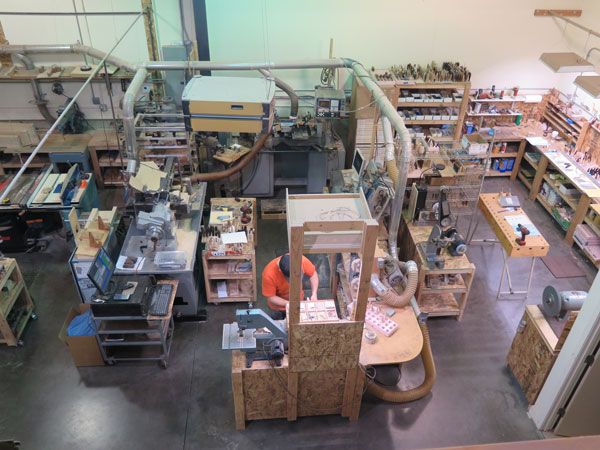
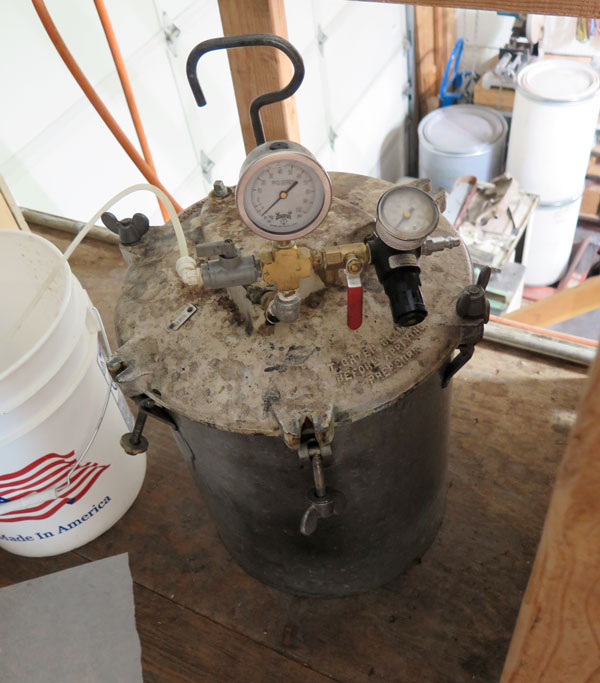
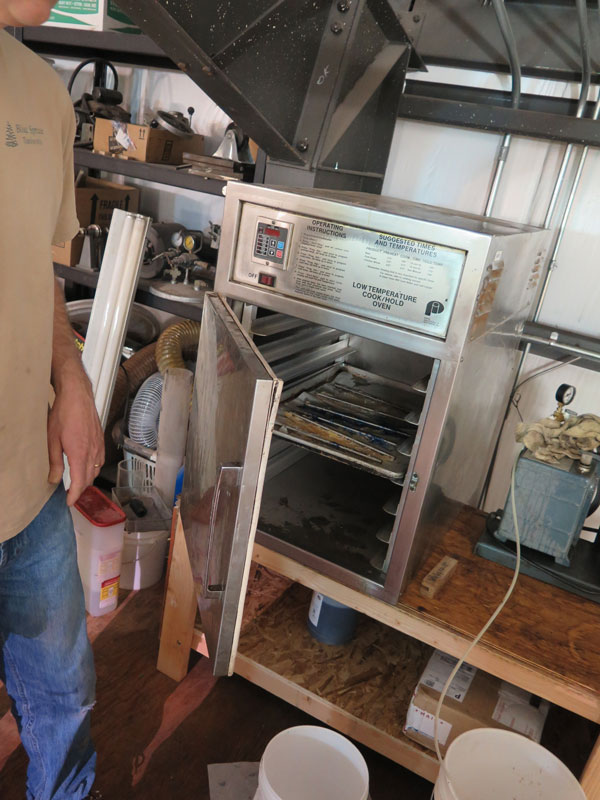
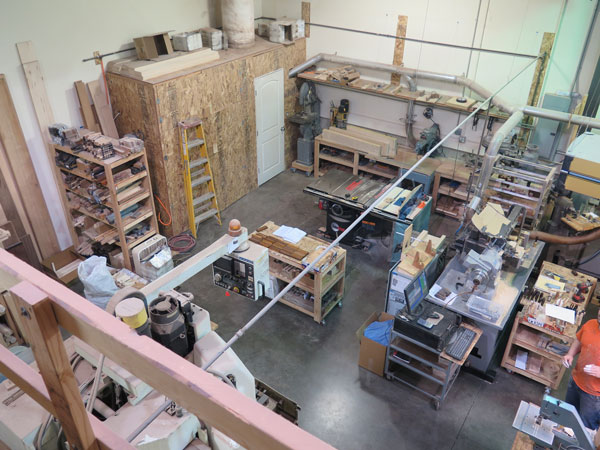
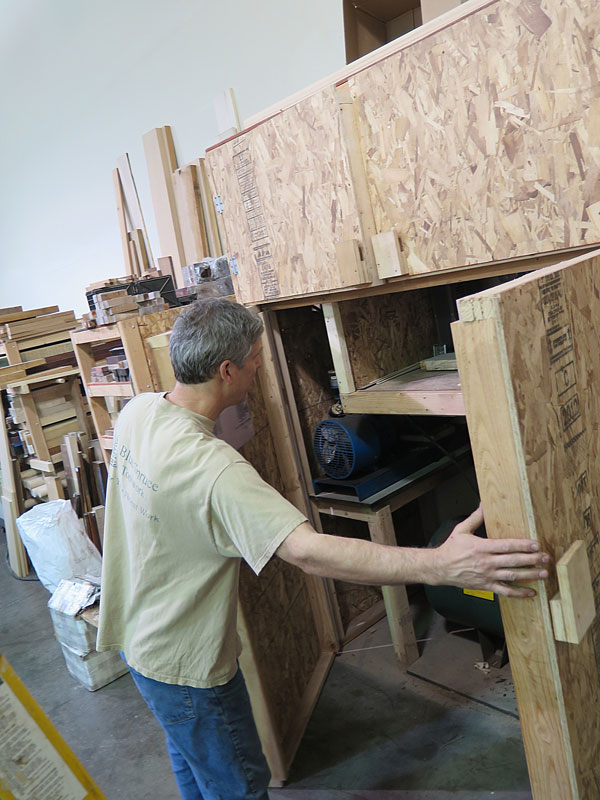
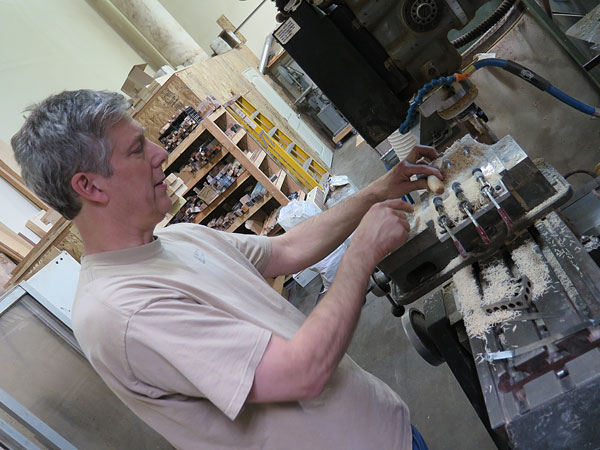
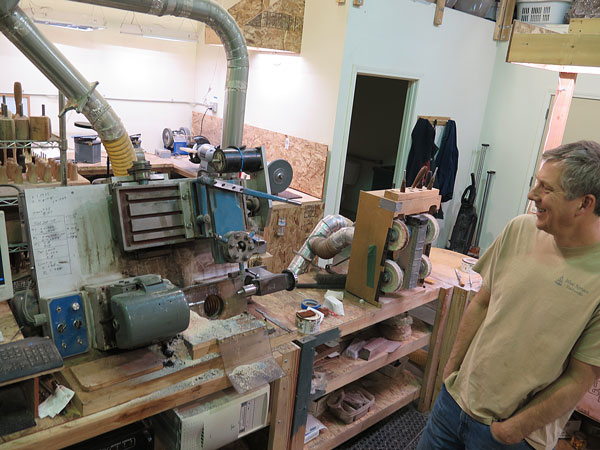
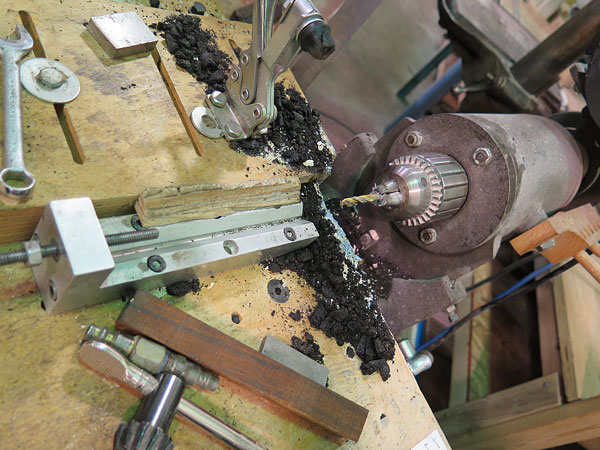
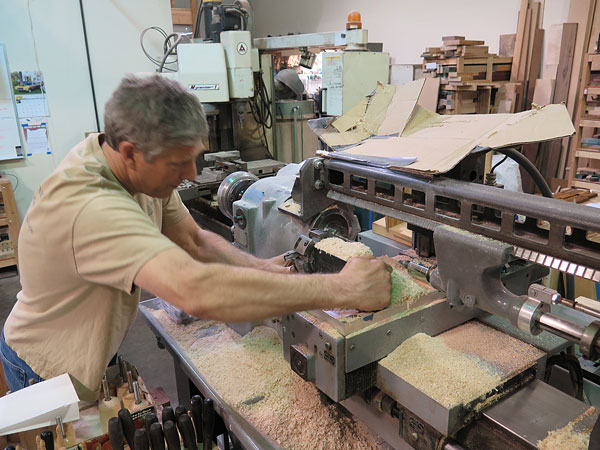
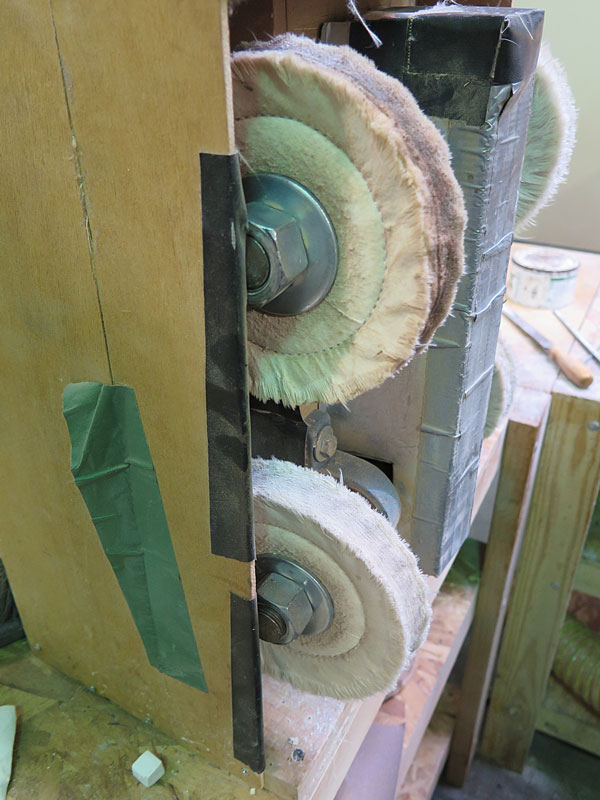
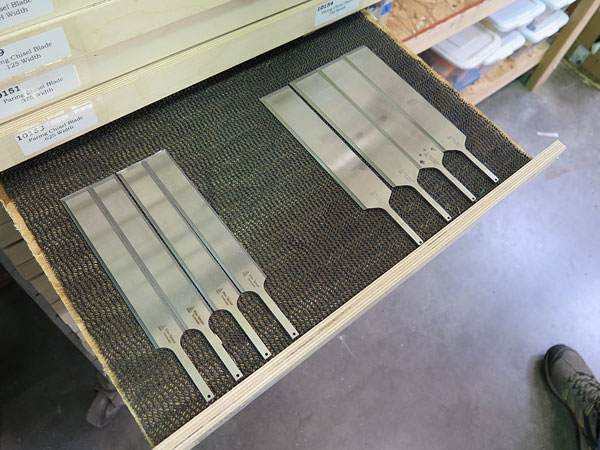
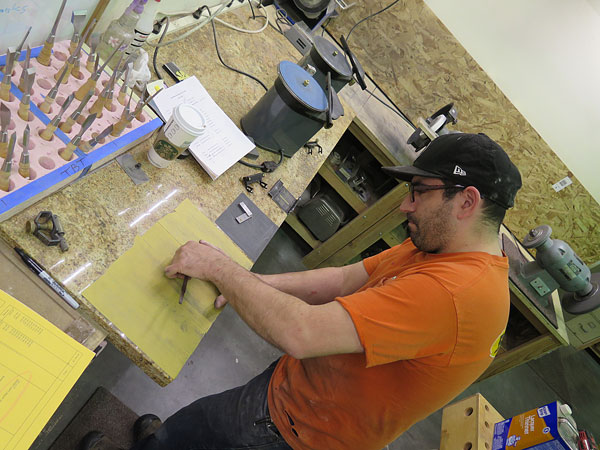
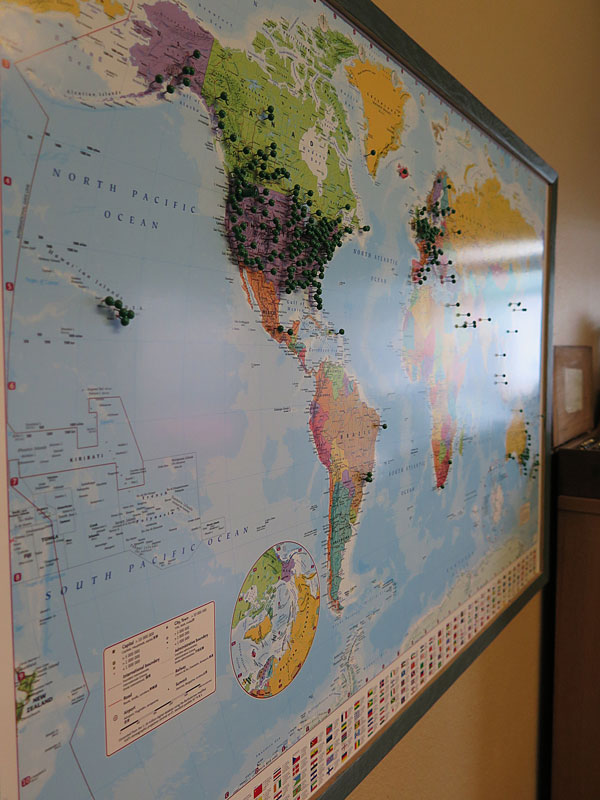
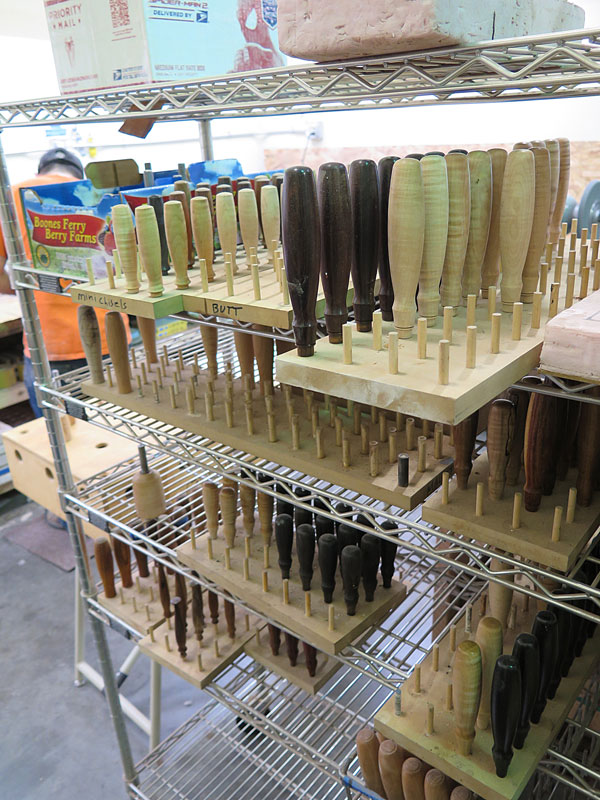




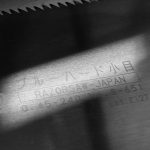
Chris, thank you! I have been waiting for a behind the scenes look at Blue Spruce Toolworks. I think this company is top notch and am very fond of their mallet and marking tools. Maybe in the future we could get a video tour?
Great pic post of a great product line, made by a great guy. Cool to see Dave uses so many Ho made tools in the shop, and as mentioned already, a no frills work space. Pretty doesn’t get work done.
I really don’t think there is a pin present in that map for every customer, maybe he pulls them after a while to put in newer sales? Looking at the area where Ohio, particularly Southern Ohio is located I know more owners than pins in the entire state.
Love those handles. 🙂
Chris, I was watching an older rerun episode from 2012 of the Woodwright Shop. You were guest host with Roy Underhill. The title of the episode was “Two screws for you”. You had made a wooden vise and had mentioned that you can buy the metal lead screws with the round handles commercially. You said you preferred to make your own wooden lead screws. I have searched many places, but cannot find these commercial metal lead screws with the round handles. Could you please let me know where I can buy them. Thank you. Bob
OSB, plywood and common pine cabinetry! Duct tape and cardboard. No dovetailed drawers of maple in walnut cabinets! Looks a lot like my shop but cleaner. What an absolutely fantastic workplace. Pictures speak volumes. Thanks so much for renewing my faith that we mortals can do decent work without the “Fine Woodworking” approach to our working space.
You can’t buy what you don’t know about. I bet you fixed that a bit and several new pins will show up in the next few weeks. Nice write-up.
Thanks for the tour, Chris. I was curious to see that the upgrade over the garage looked like.
I see the pin hovering over Perth, Australia!
Dave, has the best chisel handles – bar none. He has one of the best eyes for a line and design.
Regards from Perth
Derek
There would be more pins, if Blue Spruce didn’t have so many repeat customers.
I have several of their tools, and several of their tool rolls, which are also excellent.
Thanks for the tour.